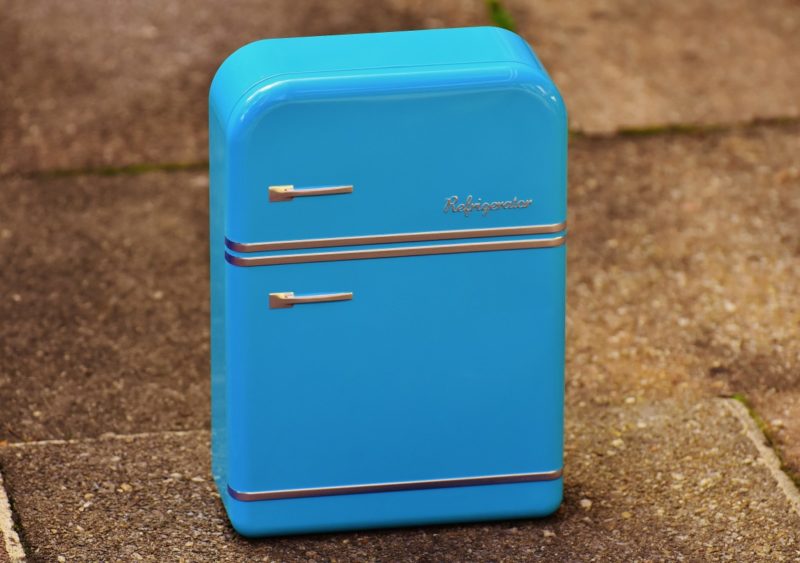Are you planning to replace your old refrigerator but you don’t want to sell it, so you want to know how to store a fridge? We have about eight steps and ideas for you to keep it safe. And by following this guide, you can probably still use it after a couple of months without any defects.
Some people prefer storing their unused appliances to decrease the amount of waste on dumpsites. And some don’t want to sell it to scrap metal recyclers because it still might be working or the product is valuable.
So, if you’re going to keep their fridge in their basement or garage, you need to know how to store it properly. You risk damaging the entire unit if you just dumped it in a room without any protection, and you won’t be able to use it again. Now, why don’t we start discussing the steps and tips for you to follow? Read on!
Fridge Preparation Before Storage
There are several steps to understand and apply in this kind of scenario. Some of you might have an idea, but we must double-check to ensure that we’re doing it correctly. So, we gathered some of the most detailed and well-explained steps on how to store a fridge. And here they are:
Step #1. Unplug the fridge
So, we have to turn off the fridge and other features through the thermostat and unplug the main cable from the outlet. Do this before taking out your goods to avoid consuming too much energy while the fridge door is open. Also, you can use some cable wires to hold the cables together and in place. We don’t want wires to scatter on the ground since there might be rats or other organisms that might chew the cord.
Step #2. Take out all the goods
If you have a new fridge, you should transfer all the goods there to avoid spoiling. We need to clear out your fridge since we have to clean it first. Also, the food will break if we’re going to leave them there without running the refrigerator. When your new food compartment is not available yet, you can find an ice cooler for the frozen goods.
Meanwhile, some of them could survive at your counter for a couple of hours. Then, you can also disconnect the water line and dispense all the water and ice. And place your ice in the cooler to minimize waste.
Step #3. Clean
Detach shelves, crispers, and other removable compartments and let them soak in soapy water for a while. Now, you can prepare your organic cleaning solution, or you can use disinfectant sprays. We don’t have to worry about the chemicals permeating the food because we’ve already removed our goods and won’t use the fridge for a few months.
Make sure to spray and scrub all sides with your cleaning agent. Don’t also forget to wash the compartments you removed earlier. Cleaning the fridge will remove excess food, which could prevent bacteria and unpleasant smells.
Step #4. Dry
Molds mostly grow in moist habitats, and we wouldn’t want that in our fridge. So, we should wipe all sides and corners dry with a soft cloth. Do the same to your shelves and crispers and wait for a few hours for them to air dry completely.
Step #5. Check the drip pan
So, our primary goal is to prevent any bacteria and contaminants that might grow inside of our fridge. We should ensure that there will be no signs of water and moisture in all corners. And that is why we need to check the drip pan on the bottom back of the fridge.
Also, don’t forget to examine the pipes once you open the back panel if there are any signs of leaks.
Remove the drip pan and discharge all water. Undrained water will emit an unpleasant smell after a couple of weeks. Then, spray the pan with your cleaning solution and wipe it dry.
Step #6. Relocate
Ask for some extra set of hands for this step. It would be easy if your fridge has wheels or a trolley, but it wouldn’t be helpful if you’re going to store the fridge in the basement. And if your fridge has legs, we have no choice but to carry it to prevent damaging the bottom part of the unit. When you move it, make sure that the path is clear to avoid accidents and severe damage to the fridge. As much as possible, move it carefully.
We suggest that you place some rugs or any cloth on its legs for a smoother glide.
Step #7. Let the fridge stand in an upright position
When you store it, ensure that it’s not on its side or back. It should stand upright. We don’t want the substances such as the compressor oil to spill or the internal components to dismantle.
Step #8. Ensure safe environment
We suggest that you buy a cover for your fridge to avoid dust accumulation and protect it from severe temperatures. Also, don’t forget to check it from time to time, especially during the winter seasons. And ensure that your storage area is safe for your appliance if you want to maintain its efficiency and overall operation.
Conclusion
And that is how to store a fridge. Some of these tips are unnecessary, especially if your basement is clean and free of dust and moisture. However, note that fridges don’t usually last longer if the unit is not maintained or adequately drained. We hope this article helped you out. If you want to learn more, try reading this one, “How to drain air conditioner?” Keep safe!

